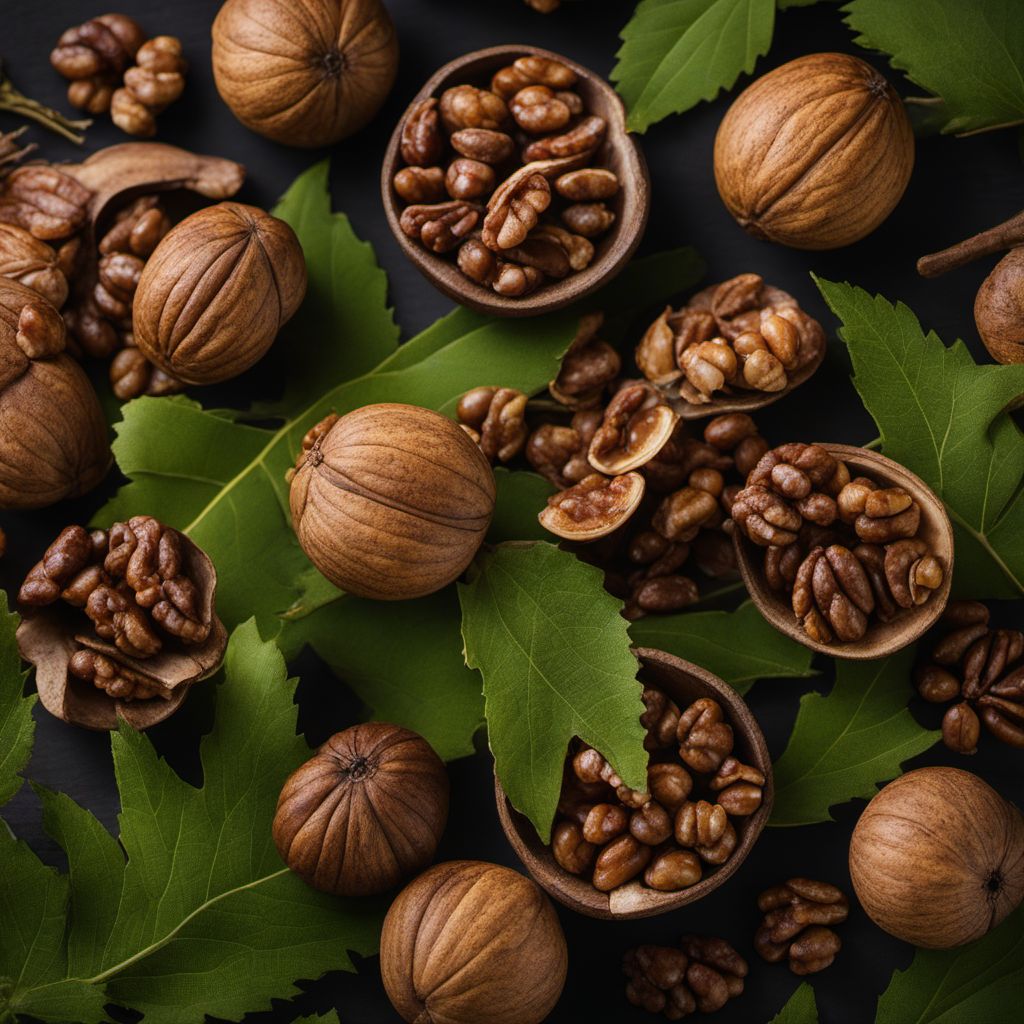
Ingredient
Eastern black walnut infusion leaves
Unveiling the Aromatic Power of Eastern Black Walnut Infusion Leaves
Eastern black walnut infusion leaves have a distinct, earthy flavor with hints of bitterness and nuttiness. They are often used to infuse liquids, such as oils, vinegars, and spirits, to add depth and complexity to dishes. The leaves are dark green and have a slightly fuzzy texture.
Origins and history
Eastern black walnut trees are native to North America and have a rich history in Native American and Appalachian cultures. The leaves have been used for centuries for their medicinal properties and as a flavoring agent in traditional dishes. Today, they are still foraged and used by chefs and home cooks alike.
Nutritional information
Eastern black walnut infusion leaves are a good source of antioxidants and contain small amounts of vitamins and minerals. They are also rich in tannins, which give them their distinct flavor and aroma.
Allergens
There are no known allergens associated with eastern black walnut infusion leaves.
How to select
When selecting eastern black walnut infusion leaves, look for fresh, vibrant leaves that are free from blemishes or signs of damage. Avoid any leaves that are wilted or discolored. It is best to forage for these leaves in the wild or purchase them from specialty stores or online suppliers.
Storage recommendations
To preserve the freshness and flavor of eastern black walnut infusion leaves, store them in an airtight container in a cool, dark place. They can also be frozen for long-term storage.
How to produce
Eastern black walnut trees can be grown from seeds or young saplings. They require well-drained soil and full sun to thrive. The leaves can be harvested in late spring or early summer when they are at their peak flavor and aroma.
Preparation tips
Eastern black walnut infusion leaves can be used to infuse oils, vinegars, spirits, and syrups. They add a unique, earthy flavor to dressings, marinades, sauces, and desserts. They pair well with ingredients like chocolate, caramel, apples, and pears.
Culinary uses
Eastern black walnut infusion leaves are commonly used in dressings, marinades, sauces, and desserts. They can be used to infuse oils for salad dressings, vinegars for pickling, and spirits for cocktails. In Appalachian cuisine, they are used to flavor dishes like black walnut cake and ice cream.
Availability
Eastern black walnut trees are native to North America and can be found in the eastern and central regions of the United States. They are also cultivated in some parts of Europe and Asia.
